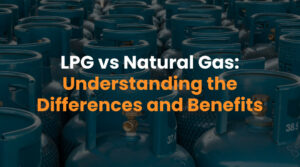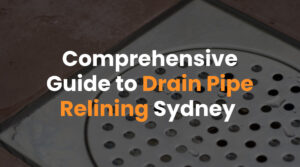Water pressure is a crucial factor in maintaining a well-functioning plumbing system. In this article, we explore a case where a client faced water pressure issues and discuss the strategic upgrades and installation of water pressure regulators that effectively resolved the problem. We also highlight common signs indicating water pressure problems and emphasise the importance of maintaining optimal water pressure for the health of your plumbing system.
What the Client Was After
Our client, residing in a semi-detached house, was grappling with water pressure issues due to a shared water line with the neighbouring home. Without separate water meters for each property, this arrangement was leading to inconsistent water pressure and distribution problems.
The Work Completed
To tackle this challenge, we undertook a strategic upgrade on the existing water supply line. Our first step was to create a new mains water connection on Sydney Water’s side. Following this, we replaced the existing pipeline with a larger diameter pipe to ensure an adequate water supply. This redesign eliminated the previous pressure concerns, ensuring both properties can now enjoy a consistent, robust water flow, without infringing on each other’s supply.
Top Signs Your Home May Have a Water Pressure Problem
Water pressure issues can range from an occasional nuisance to a significant household problem if left unaddressed. Recognising the signs early can make the difference between a quick, simple fix and an extensive, costly repair. Here are some top signs that your home may be facing water pressure problems.
The most obvious sign is when water trickles instead of gushing from your faucets and showerheads. Whether in the kitchen, bathroom, or garden hose, reduced water flow often signifies a water pressure issue.
Next, if you’re experiencing inconsistent water pressure—high one moment and low the next—you might be dealing with fluctuating water pressure. This inconsistency can indicate issues with your home’s plumbing or the municipal water supply.
Similarly, if your water pressure drops when multiple fixtures are in use, it’s a clear sign of low water pressure. For example, if the shower pressure drops when someone flushes a toilet or starts the dishwasher, it’s likely that your home doesn’t have adequate water pressure.
Unusual noises from your pipes, such as banging or whistling, can also be indicative of water pressure problems. These sounds often result from water rushing past a blockage or through a narrowed section of pipe.
Lastly, persistent leaks are a serious sign of high water pressure. This can lead to damage in your home’s plumbing system over time, potentially resulting in costly repairs.
If you notice any of these signs in your home, it’s best to consult a professional plumber promptly. Resolving water pressure issues early can save you time, money, and the hassle of dealing with larger plumbing problems down the line.
Understanding the Role of Water Pressure Regulators in Your Plumbing System
Water pressure regulators, also known as pressure-reducing valves, play a crucial role in your home’s plumbing system. These devices control the amount of water pressure entering your home from the main water line. They not only help maintain a consistent flow of water but also protect your home’s plumbing fixtures from potential damage caused by high water pressure.
In our recent project, we realised the semi-detached house was struggling with water pressure inconsistencies due to a shared water line. This situation is where a water pressure regulator can be a game-changer. By installing one at each property, it would have been possible to maintain independent control over water pressure, preventing any water supply discrepancies.
A water pressure regulator works automatically. It reduces the high pressure from the municipal water supply to a safer, more manageable level before it circulates in your home. Most regulators are preset by manufacturers to a pressure level that’s suitable for most homes, typically around 50 to 70 psi.
But why is this important? Excessive water pressure can strain your plumbing system, leading to leaks, pipe damage, and premature wear and tear on appliances like dishwashers and washing machines. On the other hand, too low a pressure can affect the functionality of showers, faucets, and toilets.
Where Was the Job Completed
Tempe, 2044, NSW.
Who Worked on the Job
Sam and Charlie.
Images from the job













